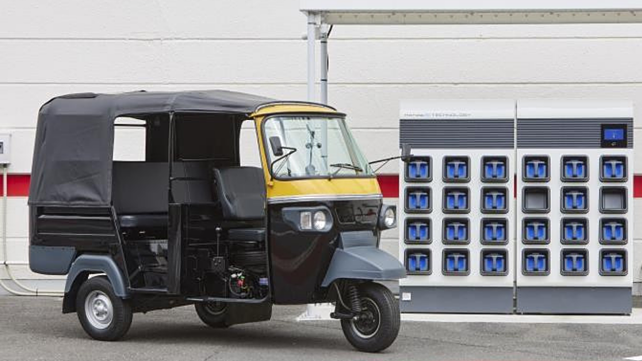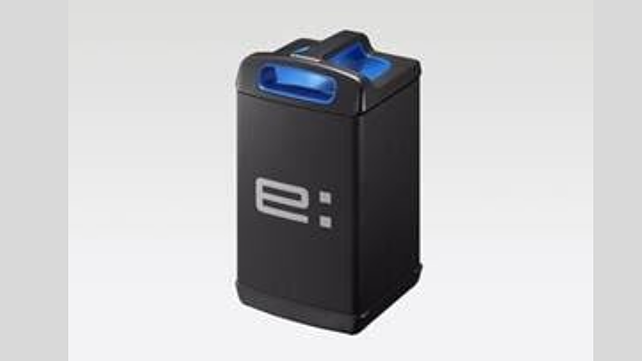
Japanese automaker, Honda Motor on Friday announced plans to begin a battery sharing service for electric three-wheelers in India in the first half of 2022, using the Honda Mobile Power Pack (portable and swappable batteries).
Towards this, the company said it will establish a local subsidiary in India. The subsidiary will install a number of Honda Mobile Power Pack Exchangers (MPP e:) as battery swapping stations and conduct battery sharing services in the cities its operates in. Honda will work with electric rickshaw manufacturers and begin the service in selected cities first and then expand to other areas in stages.
At present, companies such as Sun Mobility, Lithion, and Voltup are providing battery swappable solutions in India.
The Japanese automaker believes the Indian economy is growing, energy demand is increasing, and air pollution is worsening. To address these issues, country-wide efforts are being made to expand utilisation of renewable energy and to actively pursue electrification of the transportation sector, which accounts for approximately 20% of the nation’s greenhouse gas emissions, it said.
The Indian market has over eight million auto-rickshaws plying on its roads, and they have been an essential means of daily transportation for people. In urban areas, these rickshaws are powered mainly by CNG (compressed natural gas) and have been a key challenge for electrification.
In order to contribute to India’s effort to accelerate electrification and expand the use of renewable energy, Honda will work to eliminate these three issues through the use of swappable batteries and by sharing such batteries.
Minoru Kato, Chief Officer, Life Creation Operations, Honda Motor said Honda MPP has huge potential to electrify all kinds of devices including small-sized mobility products, and expand the use of renewable energy.
“By offering a battery sharing service in India, Honda will contribute to the accelerated electrification of rickshaws and expanded use of renewable energy. Moreover, Honda will continue serving people worldwide with the joy of expanding their life’s potential by further expanding the utilisation of the MPP into broader areas,” he added.
In consideration of this new business, Honda began demonstration testing in India in February 2021, with 30 units of electric rickshaw taxis driven for a total of more than 200,000 km in operation. Through this testing, Honda identified issues to be addressed and verified business viability.
| External dimensions (mm) | Approx. 298×177.3×156.3 |
| Battery type | Lithium-ion battery |
| Rated voltage | Approx. 50.26V |
| Rated capacity | 26.1Ah/1314Wh |
| Weight | 10.3kg |
| Charging time | Approx. 5 hours |
| Country of production | India (MPP e: for the battery sharing service in India) |
How Will It Work?
Honda’s battery sharing service will enable rickshaw drivers to stop by at the nearest battery swapping stations being set up in a given city and swap an MPP e: with a low remaining charge for a fully-charged MPP e:, said the company.
Honda expects the use of this service to significantly reduce driver concern about running out of batteries as well as the risk of losing business opportunities with customers, while waiting for rickshaw batteries to be charged.

Understanding The Honda MPP e:?
The Honda MPP e: is a portable and swappable lithium-ion battery capable of storing a large amount of electricity, more than 1.3 kWh, which is an increase from the previous version of the MPP. The MPP e: is highly versatile, as it can be utilised as a power source for a broad range of compatible devices, in addition to mobility products.
The MPP e: also features a built-in control unit that recognises the conditions of the MPP e: and records the occurrence of all events. The data is collected through the connector, while MPP e: is charging and then utilised for battery sharing operation and other secondary uses. Further, Honda said, the unit is highly durable. By considering heat dissipation during continuous discharging, deterioration due to high temperature is prevented, and sufficient water resistance, vibration resistance and shock resistance are ensured under the expected normal operating environment, a release issued by the company stated.